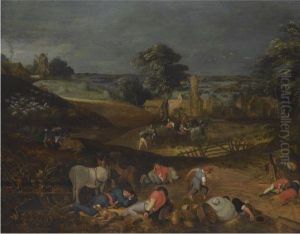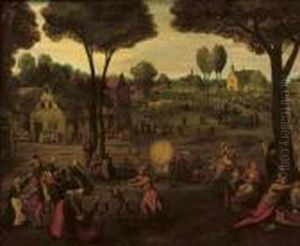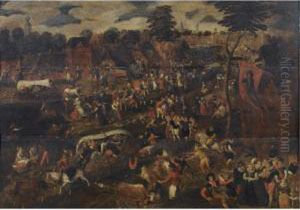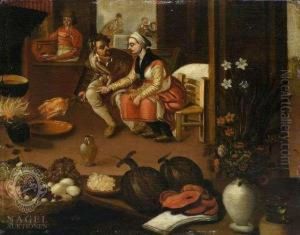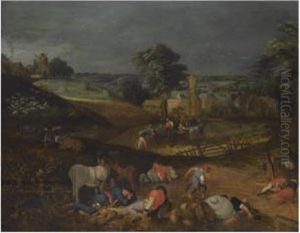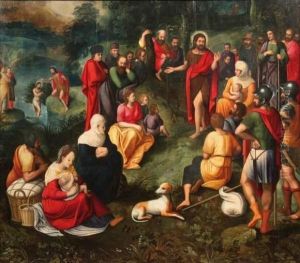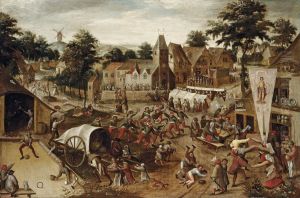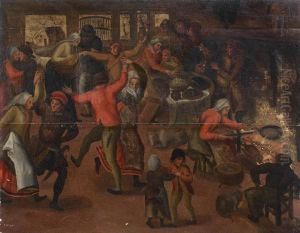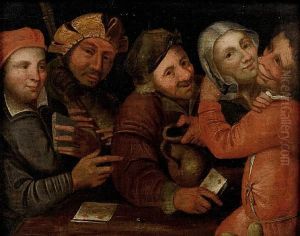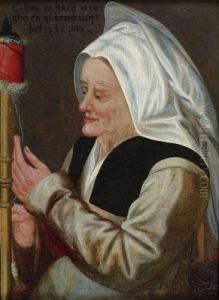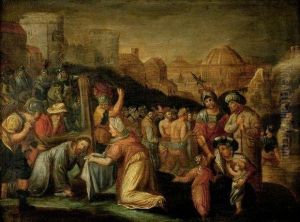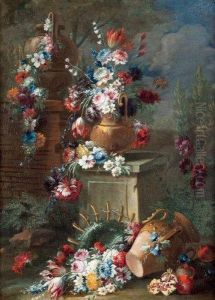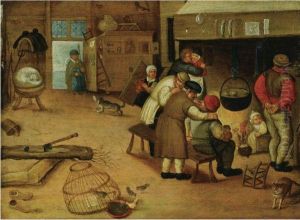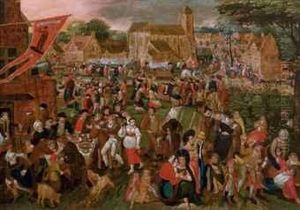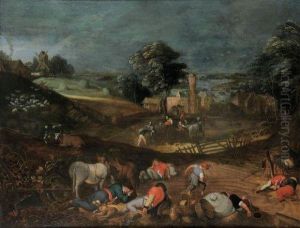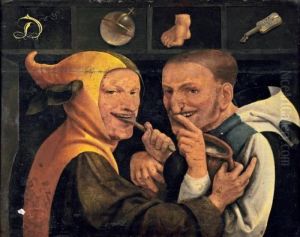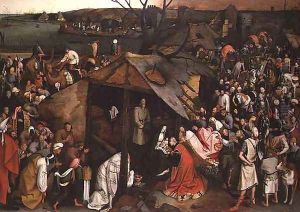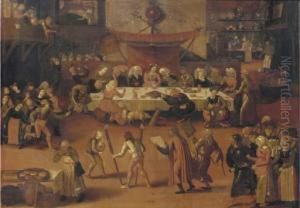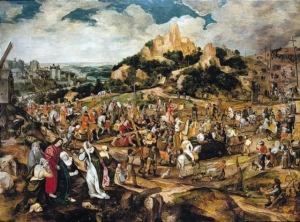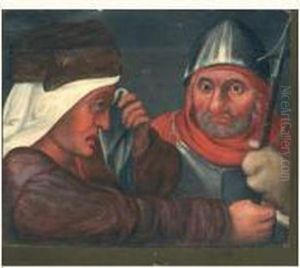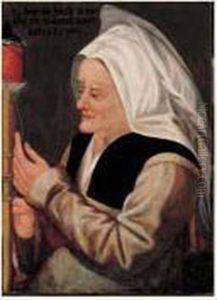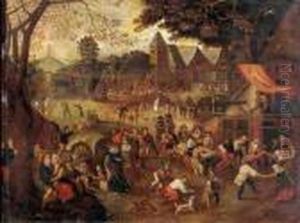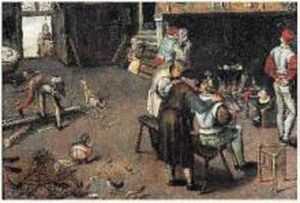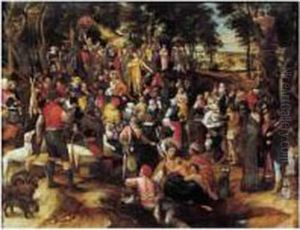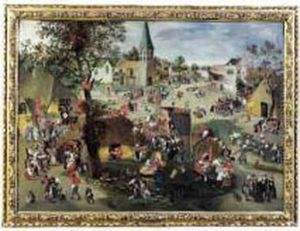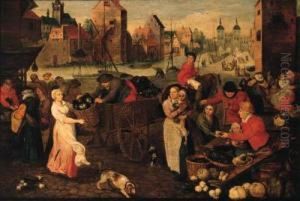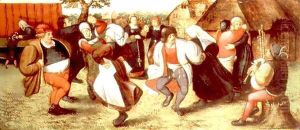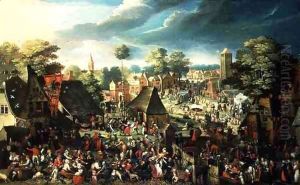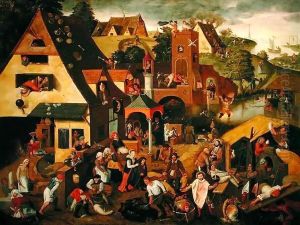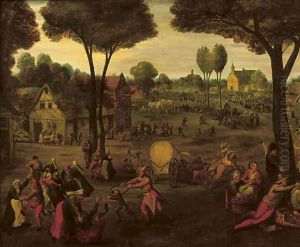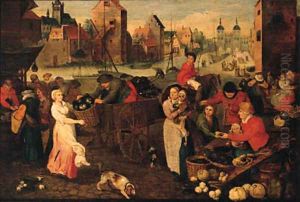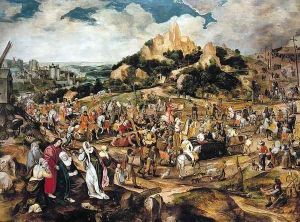Peeter Baltens Paintings
Peeter Baltens, also known as Peeter Custodis or Pieter Balten, was a Flemish painter, printmaker, and draftsman active during the Renaissance period. Born in Antwerp in 1527, he was a contemporary of Pieter Bruegel the Elder and is often associated with the same artistic circles. Baltens is known to have been a versatile artist, engaging in various genres such as genre scenes, religious compositions, and landscapes, although his work was not as widely recognized as that of some of his contemporaries.
Baltens became a master in the Antwerp Guild of St. Luke in 1550 and spent most of his career in his native city. During his lifetime, Antwerp was a vibrant center for the arts and a hub of economic activity, which provided a fertile environment for artists. Baltens was also involved in the local community as a poet and playwright, which often intersected with his artistic practice. His involvement with the chamber of rhetoric 'De Violieren' (an association of poets and dramatists) linked him with important cultural figures of his time.
Although Baltens' works are less well-known today, he was quite prolific. His genre paintings often depicted lively scenes of peasants and festivities, reflecting the influence of Bruegel. These works were characterized by their attention to detail, vibrant color palette, and dynamic compositions. Baltens also produced religious works and was known to have painted altarpieces for local churches.
As a printmaker, Baltens produced several woodcuts that were used as illustrations in books, broadening the reach of his work. His drawings and designs also served as models for other artists and craftsmen, such as tapestry weavers.
After a long career, Peeter Baltens died in Antwerp in 1584. While his work might not have achieved the enduring fame of some of his peers, it remains an integral part of the rich tapestry of Flemish art during the Renaissance. His contributions to art, literature, and the cultural life of Antwerp are reflective of the interconnectedness of artistic and intellectual pursuits during this period.
